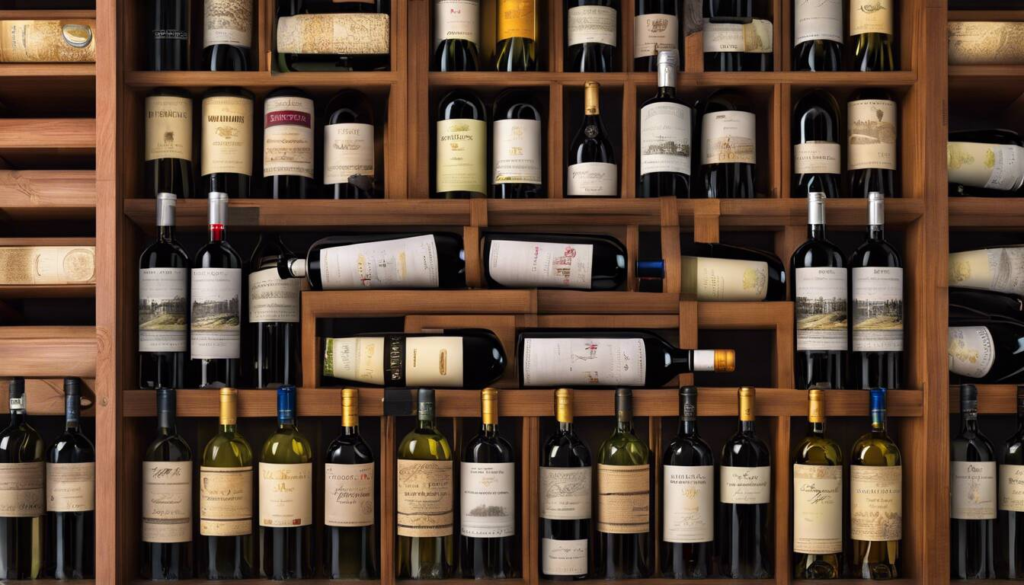Mastering the pronunciation of wine varietals is a journey that begins with learning the most common ones. From the crisp flavors of Chardonnay to the full-bodied taste of Cabernet Sauvignon, each name holds a unique story rooted in its origin. While it might sound difficult, there’s a simple rhythm to be found in French varietals such as Cabernet Franc and Viognier. Silent consonants and unique vowel sounds may appear challenging, but they’re part of a delightful melody when spoken aloud. Let’s start with some familiar faces.
Pronouncing wine varietal names correctly can enhance your experience and showcase your knowledge. For instance, the pronunciation of “Merlot” as “mer-loh” and “Chardonnay” as “shar-doh-nay” can make a positive impression when ordering in a restaurant or discussing wine with others. Remember, it’s always best to go for the original pronunciation, especially when engaging in wine culture!

Top Varietal Names to Master
When it comes to opening a new bottle of wine or perusing the wine list at a restaurant, knowing how to pronounce the varietal names can make all the difference. Here are some of the most commonly encountered wine varietal names to help you feel confident and sound knowledgeable when discussing or ordering wines:
- Chardonnay: SHAR-dun-AY
- Cabernet Sauvignon: ka-behr-NAY so-veen-yawn
- Pinot Noir: pee-noh NWAHR
- Merlot: mehr-LOH
- Sauvignon Blanc: so-veen-yawn BLAHNG
These are popular varietals that you’re likely to come across no matter where you are enjoying your wine – be it at home, a social gathering, or a nice dinner out. These wines represent some of the most beloved and well-known flavors and aromas in the world of wine.
Understanding and correctly pronouncing these varietals not only showcases your expertise but also makes ordering your favorite drop an enjoyable and seamless process.
Proper pronunciation of wine names can make a good impression when ordering.
Continuing on this journey, let’s explore additional varietals representing different regions that will give you a well-rounded selection for future reference.
Navigating French Varietals
When navigating French wine varietals, it’s important to understand that the pronunciation follows French phonetics, which can be quite different from English. The emphasis on silent consonants and unique vowel sounds is what sets French wine pronunciations apart, making it an intriguing yet challenging aspect for English speakers to grasp. Let’s break down a few prominent French wine varietal names and explore the intricacies of their pronunciation.
Starting with Cabernet Franc (English: kab-err-nay fronk, French: kah-behr-neh frah), we encounter the typical French practice of silent consonants, where the “t” at the end of “Cabernet” is not pronounced. Additionally, the vowel sounds in “Franc” have a distinct quality in French pronunciation that differs from English. Understanding these nuances is crucial for accurately pronouncing this varietal.
Moving on to Viognier, the tricky part lies in the combined vowel sounds typical in French. The “ier” at the end has a specific phonetic rendering in French that might pose a challenge to English speakers. Taking guidance from a phonetic guide or even hearing a native speaker say it can aid in mastering the pronunciation.
Then there’s Grenache. The silent ‘e’ at the end is a common feature in several French words and is fundamental to its pronunciation. It’s also essential to note the softness and elongation of certain vowel sounds.
Understanding these subtleties requires attentive listening and practice, particularly because pronouncing these varietals correctly exudes respect for their origins and traditions. In case you’re unable to get it right immediately, don’t worry—wine aficionados generally consider sincere efforts towards correct pronunciation to be more significant than flawless execution.
To supplement your learning, it can be incredibly helpful to listen to sommeliers or wine experts pronounce these varietals. Additionally, familiarizing oneself with basic French phonetics can provide valuable insight into understanding and reproducing the correct pronunciations of French wine varietals.
Thus, mastering the pronunciation of French wine varietals is an enriching endeavor that offers not just linguistic rewards, but also a deeper connection to the heritage and artistry behind each bottle.
Having mastered the intricacies of pronouncing French wine varietals, let’s now move on to conquering the captivating world of Italian varietals.
Conquering Italian Varietals

Italian wines are renowned for their rich history and unique flavors. Learning to pronounce Italian varietals correctly not only helps you make a good impression but also shows respect for the cultural heritage of these wines. Let’s explore the pronunciation of some popular Italian wine varietals and unveil the nuances.
Sangiovese
Sangiovese, often referred to as the “blood of Jupiter,” is the primary grape used to make Chianti and many other esteemed Italian wines. When we encounter this name, it’s important to remember the correct pronunciation: San-joh-VAY-zeh. It may look intimidating at first glance, but once you break it down phonetically, it becomes much more manageable. Just remember the emphasis on “joh” and the soft “zeh” sound.
Nebbiolo
Another standout in Italian winemaking is Nebbiolo. This varietal is responsible for producing the prestigious Barolo and Barbaresco wines. To correctly pronounce this regal name, it’s pronounced Neb-ee-OH-loh. The stress falls on “Neb” with a long “Oh” sound at the end. This elegant varietal demands an equally elegant pronunciation.
Prosecco
Prosecco has gained international acclaim for its delightful sparkling characteristics. The pronunciation of Prosecco is straightforward: Proh-SEH-koh. The ending “koh” sound should be crisp and clear, making it an enjoyable word to articulate.
Proper pronunciation of these Italian wine names demonstrates a genuine interest in wine culture and can certainly impress knowledgeable wine enthusiasts and professionals alike.
By gaining proficiency in pronouncing Italian varietals accurately, we showcase our respect for the diverse world of wine and enrich our own enjoyment and understanding of these exquisite vintages.
As we navigate the intricate landscape of wine pronunciations, let’s now address the challenges associated with mastering the pronunciation of other globally celebrated wine varietals.
Overcoming Pronunciation Challenges
Pronouncing wine varietal names can be quite a challenge, especially when encountering unfamiliar phonetic symbols or unique emphasis on certain syllables. It’s a situation we’ve all been in—faced with a name that seems impossible to pronounce at first glance. But fear not! There are strategies that can help break down complex varietal names into manageable segments for easier practice.
One effective method is to break down the name into smaller, more familiar parts. Look for syllables or sounds within the varietal name that you recognize from common English words. For example, in the varietal “Gewürztraminer” (guh-VURTS-trah-mee-ner), you might focus on familiar sounds like “tray” and “mine,” and then fit the rest of the syllables around them.
Additionally, consider seeking out audio recordings of correct pronunciations. Listening to the correct pronunciation multiple times allows your brain to become familiar with the sound patterns and can make it easier for you to reproduce those sounds accurately.
Another challenge can be dealing with unfamiliar phonetic symbols, which are often used to represent sounds that don’t exist in English. When encountering these symbols, it can be helpful to understand how they correspond to English sounds. For example, the symbol “ɛ” represents a short “e” sound as in “bed,” while “æ” represents a short “a” sound as in “cat.”
Emphasis on certain syllables is another common hurdle when pronouncing wine varietal names. Many wine names originate from languages such as French, Italian, Spanish, and German, each with its own unique rules of stress and syllable emphasis.
| Language | Emphasis Placement |
|---|---|
| French | Last or second-to-last syllable |
| Italian | Penultimate (second-to-last) syllable |
| Spanish | Penultimate (second-to-last) syllable |
| German | First syllable |
Lastly, let’s talk about the nuances of vowel sounds. Different languages have varied vowel sounds that are often unfamiliar to English speakers. For instance, in Portuguese, understanding that “o” is pronounced as a rounded “ooh” sound instead of our flat “oh” is crucial. Similarly, paying attention to this detail ensures your pronunciation stays true to the original language.
So, whether it’s breaking down complex varietal names into smaller segments, finding audio recordings for reference, understanding unfamiliar phonetic symbols, or mastering the nuances of vowel sounds, these strategies will help confidently pronounce a variety of wine names without hesitation.
In this journey through refining your pronunciation skills for exquisite wines, we’ve touched on strategies for tackling common challenges. Now let’s explore additional techniques for mastering even the most difficult varietals.
Secrets to Pronouncing Difficult Varietals
Pronouncing wine names correctly can be akin to learning a new language. It requires practice, patience, and an openness to new sounds and patterns. So, what are the secrets to pronouncing those challenging wine varietal names with ease?
Mnemonic Devices and Practice with Native Speakers
Firstly, let’s talk about mnemonic devices. These are memory aids that can help you associate tricky wine names with something familiar or catchy. For example, to remember “Gewürztraminer,” you might think of it as “guh-VURTS-tra-miner.” The phrase “guh” sounds like someone making a funny sound – which is memorable! Additionally, breaking down longer words into parts can make them easier to remember and pronounce.
Another powerful technique is practicing with native speakers. This can help you pick up on the natural rhythms and intonations of the language. Plus, speaking with others who are familiar with these varietals allows you to receive immediate feedback on your pronunciation.
For instance, if you have a friend who is a native French speaker, asking them to help you pronounce “Viognier” as “vee-own-yay” can not only improve your pronunciation but also deepen your cultural understanding.
Leveraging Online Resources
Furthermore, online resources like pronunciation tutorials and audio clips are invaluable tools for auditory learners. These resources provide clear, precise pronunciation guidance and allow you to listen repeatedly until you feel confident in your pronunciation.
Imagine stumbling upon the pronunciation of “Sangiovese” and feeling uncertain about saying it out loud. In this case, listening to audio clips on reputable websites can be immensely helpful in mastering the correct pronunciation of “san-joe-VAE-sae.”
Remember, mastering the pronunciation of challenging varietal names is a journey that requires patience and consistent effort. Utilizing mnemonic devices, practicing with native speakers, and leveraging online resources are strategies designed to enhance your confidence in pronouncing these intricate wine varietals accurately.
In the pursuit of refining your wine-tasting experience, practical tips for consistent practice serve as the guiding light toward achieving finesse in navigating the diverse landscape of wine varietals.
Practical Tips for Consistent Practice
Improving your wine varietal pronunciation takes time and practice. Here are some practical tips to help you along the way:
Create Phonetic Flashcards
Using flashcards with phonetic spellings can be a helpful tool in learning wine varietal names. Write down the name of the wine and its phonetic pronunciation on each card. Then, use them to quiz yourself regularly. This method reinforces your memory and helps you associate the correct pronunciation with the name of the wine.
Record and Listen to Your Pronunciation
Another useful practice technique is to record yourself pronouncing the wine names and then listen to the recordings. This will help you identify any mistakes or areas for improvement. It also reinforces correct pronunciation through repetition, making it easier for you to remember the correct way to say the names.
Engage in Wine-Related Discussions
Joining wine-related discussions or study groups can provide you with valuable opportunities to practice pronouncing varietal names in a supportive environment. Discussing wines with others who share your interest can help reinforce what you’ve learned and give you a chance to hear others’ interpretations of pronunciation. It’s a great way to engage with fellow wine enthusiasts while working on perfecting your own pronunciation.
To take your practice even further, visit Wines Uncovered for interactive tools and exercises specifically designed to improve your wine varietal pronunciation. These resources are both informative and engaging, providing an ideal platform for honing your skills.
By incorporating these practical tips into your learning routine, you’ll find that consistent practice not only improves your confidence in pronouncing wine varietal names but also enhances your overall enjoyment of the world of wine.
Mastering wine varietal pronunciation not only enhances your understanding of wines but also enriches your experience as a wine enthusiast.

